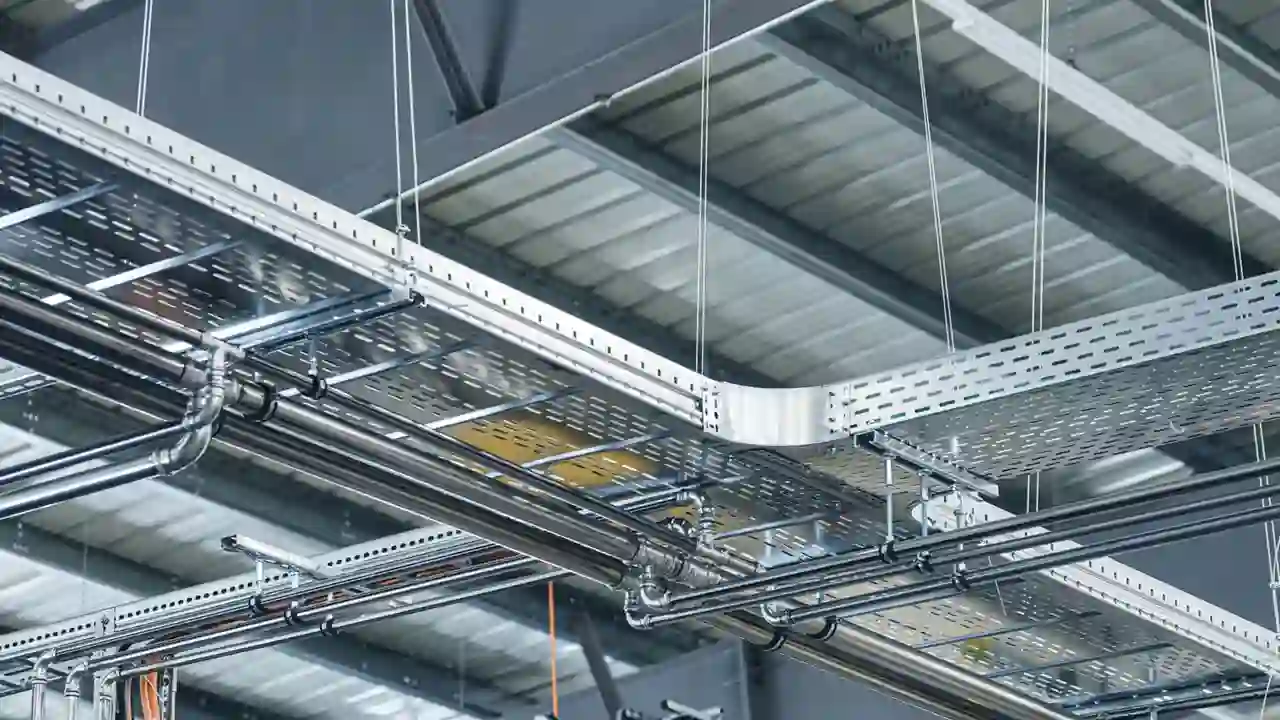01 Jun 2024

Are you tired of messy cables causing confusion in your workspace? Ever wondered how professionals keep their wires neatly organized and safe? Welcome to our complete guide on cable tray installation! In this step-by-step guide, we'll discover the best practices that can transform your management of cables from a tangled mess to a streamlined system. Curious to learn the secrets behind a flawless installation? Let's dive in! Cable trays are an essential component of modern electrical and communication systems, providing a safe and organized way to route and support cables. Whether you're working on a new construction project or upgrading an existing facility, proper cable tray installation is crucial for ensuring efficiency, safety, and compliance with industry standards. In this comprehensive guide, we'll walk you through the best practices for installation, covering site preparation, layout planning, support system installation, tray assembly, cable routing, and safety considerations. If you want to learn more about cable tray systems in general, check out our blog on Uncovering Cable Trays A Straightforward Look at Types Of Materials and Its Uses Cable tray installation is an important aspect of electrical infrastructure in many industrial, commercial, and even residential settings. Here are some best practices to ensure safe, efficient, and reliable cable tray installations: Before you begin the installation process, it's essential to prepare the site thoroughly. Start by clearing the area and removing any obstacles that might interfere with the cable tray installation. Ensure that the surface is clean and dry. If you're working in an existing facility, consult with the appropriate authorities to obtain the necessary permits and approvals. Proper layout planning is crucial for an efficient and organized cable tray systems. Determine the cable tray routing based on the requirements of your electrical or communication system. Consider factors such as cable lengths, bends, and potential obstructions. Use appropriate software or consult with experienced professionals to create a detailed layout plan that ensures optimal management and future expandability. A support system is essential for maintaining the structural integrity of the cable tray systems. Install the necessary support structures, such as hangers, brackets, or assemblies, according to the specifications and local building codes given by Cable Tray suppliers or cable tray manufacturers. Ensure that the support system is securely anchored to the building structure and can withstand the weight of the cable tray and cables. Once the support system is in place, you can begin assembling the cable tray sections. Follow the instructions given by cable tray manufacturers carefully, paying close attention to the recommended tools, fasteners, and assembly procedures. Ensure that the tray sections are properly aligned and secured to the support system. If you need to cut or modify the tray sections, use appropriate tools and techniques to maintain the integrity of the system. For proper grounding and bonding of your cable tray systems, refer to our guide on Cable Tray Grounding and Bonding: Ensuring Electrical Safety With the cable tray systems assembled, it's time to route the cables. Start by carefully planning the cable layout, ensuring that cables are organized and separated by type or system. Use appropriate fasteners to secure the cables to the tray, but avoid over-tightening, which can damage the cables. Follow industry best practices to ensure proper management of cable and airflow. Safety should always be a top priority during cable tray installation. Ensure that all personnel involved in the project are equipped with the necessary personal protective equipment (PPE), such as hard hats, safety glasses, and gloves. Follow all relevant safety protocols and procedures, including lockout/tagout procedures when working near energized electrical systems. After completing the cable tray installation, it is crucial to conduct thorough testing and inspection to ensure the system's integrity and compliance with applicable codes and standards. This process typically involves visual inspections to verify proper cable tray routing, support spacing, grounding connections, and clearances. Additionally, load testing may be conducted to ensure the cable tray systems can safely support the intended cable load without excessive deflection. Comprehensive testing and inspection not only verify the installation's quality but also help identify and address any potential issues before putting the system into service. Cable trays in UAE play a crucial role in the construction landscape, offering a reliable solution for managing cables effectively. When choosing cable tray suppliers or cable tray manufacturers in UAE, it's essential to work with reputable companies that connect to industry standards and regulations. Companies like Bahwan Technical Contracting Co LLC are renowned for their high-quality cable trays and exceptional customer service. By following these best practices for cable tray installation, you can ensure a safe, organized, and efficient cable management system that meets the demands of your electrical or communication infrastructure. From the options provided by Cable Tray manufacturers and Cable Trays suppliers in UAE, businesses can seamlessly enhance their infrastructure, ensuring efficient solutions that not only meet industry standards but also promote safety and reliability for the future. Remember, proper planning, attention to detail, and adherence to safety protocols are key to a successful cable tray installation project. To keep your cable tray systems in top condition, check out our tips on Cable Tray Maintenance: Tips for Prolonging the System's LifespanBest Practices for Cable Tray Installation
Step 1: Site Preparation
Step 2: Layout Planning
Step 3: Support System Installation
Step 4: Tray Assembly
Step 5: Cable Routing
Step 6: Safety Considerations
Step : 7 Testing and Inspection
Conclusion